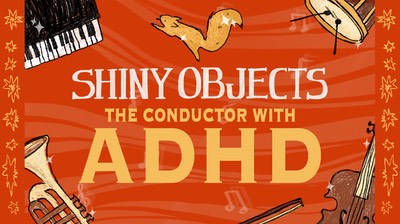You don’t need to be a neuroscientist to navigate the world of ADHD, but it may be helpful for someone to help you understand ADHD in accurate plain language, and provide tools and strategies so you can respond to ADHD in a helpful, respectful, and productive way.
The ADHD Inside Out Framework gives you all of that.
Using Proven Models and Practical Templates
that are thorough, memorable, and usable;
the Framework provides Solutions
to the Two Critical Problems
in the world of ADHD.

![]()
Module 1
OUTSIDE IN PERSPECTIVE
Shifting Mindsets
Module 1 is preparatory in nature and explores the Outside In Perspective of ADHD, which is how the vast majority of people navigate the world of ADHD.
Since ADHD symptoms are the result of some unique brain functions, they are easily misunderstood and almost universally misinterpreted.
Initially, ADHD presents as difficulties with focus, impulsivity, emotional regulation, and self-control in general.
Over time, however, it becomes apparent the individual doesn't always have these difficulties; sometimes they can overperform in these areas, so the symptoms appear situational.
For example, parents might comment,
“My son can focus on video games for 8 hours straight without blinking
but when it comes to math homework he simply refuses to focus.
Obviously, he's choosing when to focus and when not to.”
At some point, the focus shifts from the individual's actions, to suspicions about their character and choices. ADHD behaviours which initially seemed like the individual was "having difficulty” are now judged as though the individual is choosing to ”be difficult”.
This deteriorating change in perspective, from “having difficulty“ to “being difficult”, is a pathway that the Framework refers to as the Outside In Perspective, and almost everyone in the world of ADHD is stuck somewhere on this deteriorating pathway.
The root problem is that ADHD genuinely 'looks like something it isn’t’
- it looks like bad character and poor choices.
A shift in mindset is the remedy to this root problem.
Module 1 will help shift mindsets by contrasting the Outside In and the Inside Out Perspectives by explaining some unique ADHD brain functions in terms that most children can even understand.

Module 2
INSIDE OUT PERSPECTIVE
Proven Models
Learn to UNDERSTAND ADHD properly, from the Inside Out.
Whether you are an individual who has ADHD, or someone who frequently interacts with such individuals, the Inside Out Perspective will help you make sense of the otherwise bewildering world of ADHD.
When most people experience those quirky, confusing, and often infuriating ADHD behaviours that we call symptoms, they don’t immediately start wondering what's going on inside the brain of the person exhibiting such behaviours, but they should.
Module 2 builds upon the brain function overview in Module 1 by explaining more specific ADHD brain functions using simple and memorable Models.
These Models highlight why ADHD brain function can cause difficulties in some situations, and advantages in other situations.
This dichotomy is at the heart of the ADHD Inside Out Perspective:
ADHD is both a superpower and kryptonite
Whenever an individual is having difficulty because of ADHD, the Proven Models will help put their actions into the proper context, allowing them (or those around them) to interpret ADHD difficulties through an Inside Out Perspective.
The Models make so much sense that they easily become part of conversations, and keep everyone focused on responding to ADHD difficulties in a helpful and strength based way.
Having a simplified and enduring understanding of ADHD provides lasting opportunities to help validate individuals with ADHD, educate others, and advocate for a strength based responses to the ADHD challenges you encounter.

![]()
Module 3
PRACTICAL TEMPLATES
Road Maps to Follow
Learn to RESPOND to ADHD from the Inside Out.
The more you use the road maps provided in this Module, the sooner you can make the shift from Surviving to Thriving!
When trapped in the deteriorating Outside In Perspective, responses toward ADHD behaviours also deterioriate.
Initial empathetic responses designed to help the individual who is “having difficulty” are gradually replaced by responses motivating them to stop “being difficult”.
The presumption that their ADHD behaviours are the result of bad character and poor choices triggers responses toward the individual that are increasingly tainted with shame and blame.
Shame is a commentary on a person’s bad character
Blame is a commentary on their poor choices
This deteriorating tone in responses is where the Outside In Perspective creates the deepest problems in the world of ADHD, and this is where the rubber meets the road maps.
Recognizing the tendency toward shame and blame, Module 3 provides Practical Templates which act as road maps to follow as you to apply the Models learned in Module 2 to any situation where ADHD is causing difficulty.
These Practical Templates make so much sense that they will dawn on you in real time, when you need them most.
The most common Templates address difficulties such as time management, emotional outbursts, impulsive behaviours, task planning and execution, creating and following routines, communication, and such.
Practical Templates give you a place to start as you personalize your responses (strategies) to the unique and specific ADHD challenges that you experience.

Module 4
PROFESSIONAL ENCOUNTERS
for Your Situation
Experience the Framework with a Pro!
Professional Encounters give you the opportunity to work with someone who has been trained to use the ADHD Inside Out Framework.
These Encounters can be experienced through ADHD Coaching, Personal Learning, or Professional Training.
Contact Dan
coach@adhdinsideout.com
